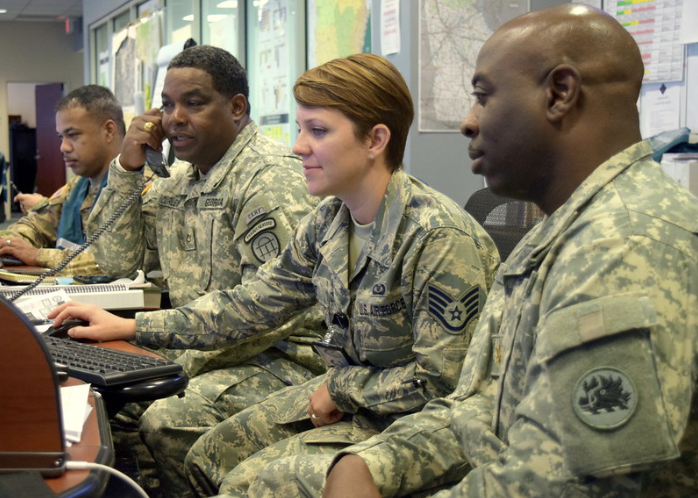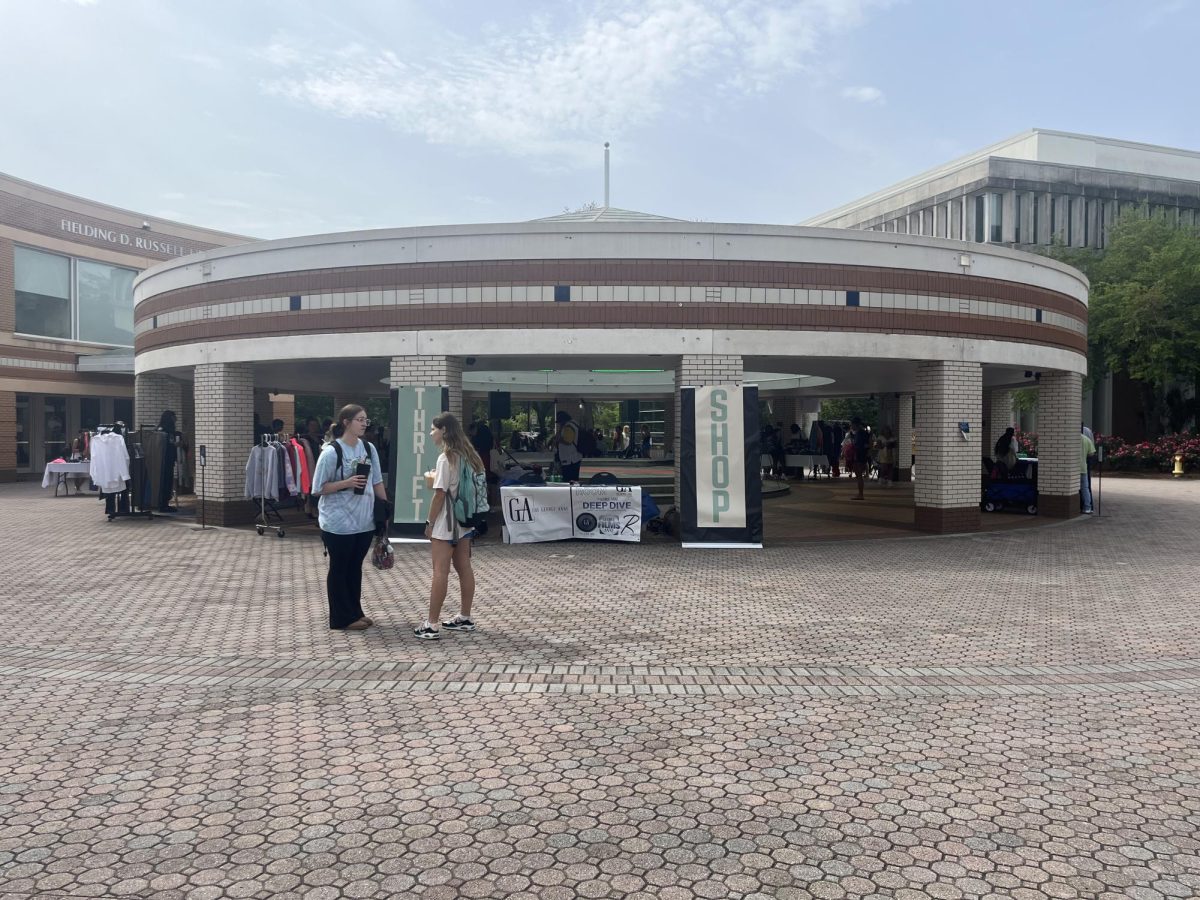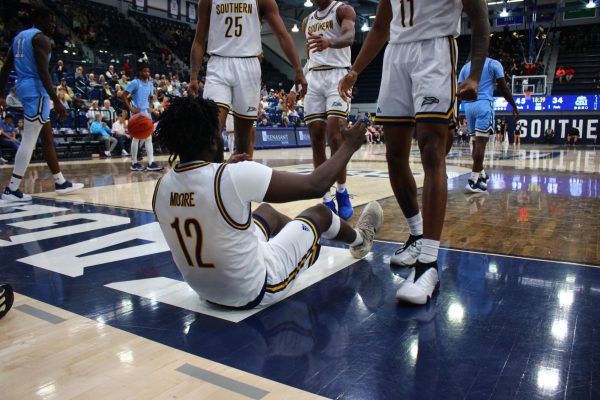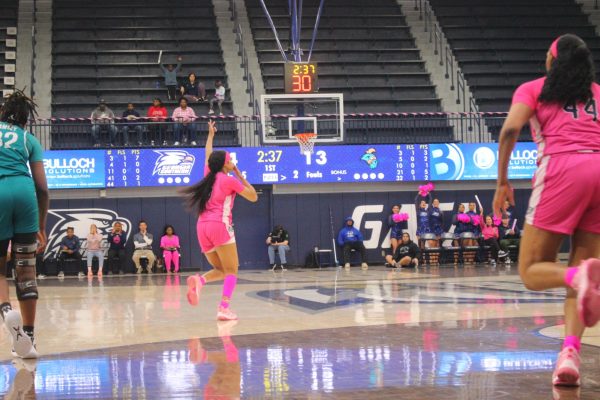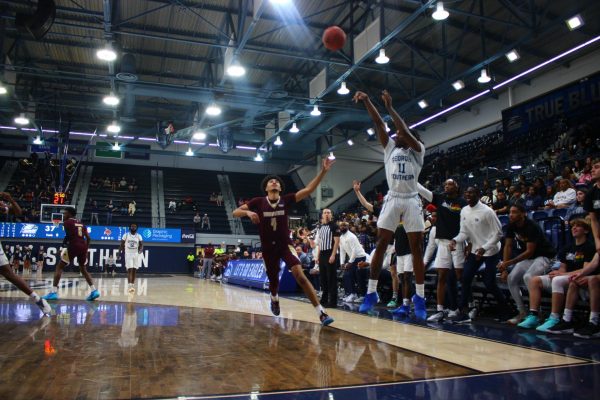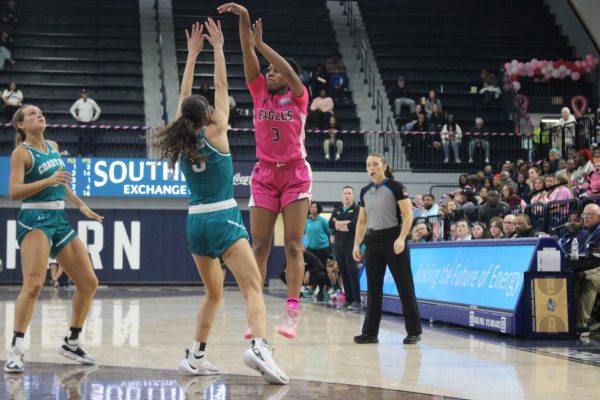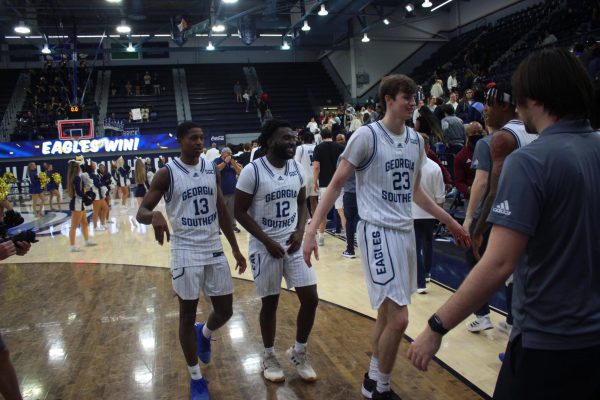By the numbers: Recruiting budget soars with move to FBS
April 9, 2015
Since Georgia Southern students voted ‘Yes to FBS’ in September of 2012 to make the move from Division 1-AA to Division 1-A in football, the university’s athletic budget doubled and the recruiting budget increased by 61 percent.
In fiscal year 2013 (July 1, 2012 – June 30, 2013), Georgia Southern spent $169,500 across 13 sports to recruit student athletes. In fiscal year 2014 (July 1, 2013 – June 30, 2014), that number increased to $277,763.
The spike in recruiting money parallels the spike in the overall athletic budget. In just one year, the athletic budget went from $9.7 million to nearly $19 million.
The massive increase is no accident.
President Brooks Keel often refers to athletics as the ‘front porch’ of the university. He says that if people can get on the front porch, they’re going to look through the windows and see what Georgia Southern as a whole is all about.
So given that philosophy, fielding the best sports teams possible is paramount to the university’s long-term vision. Moving up to the Sun Belt puts Georgia Southern on a national stage, which opens doors to better recruits.
“The more Georgia Southern is able to make a name for [itself] both within the region and nationally; it will get kids more interested than they would have before. And I think that’s part of the move to the FBS,” John McElwain, Associate Commissioner of Communications for the Sun Belt, said.
Compare and Contrast
Even after doubling the athletic budget, Georgia Southern is still a relative lightweight in the Sun Belt and across the country.
The U.S. Department of Education’s Office of Postsecondary Education reports that Georgia Southern’s athletic budget is the ninth-lowest in the Sun Belt.
Texas State has the highest budget with $29 million, followed by New Mexico State and Georgia State with $25.7 million and $23 million respectively. Arkansas Little-Rock’s $8.5 million budget is the lowest.
But when it comes to recruiting, a budget can only take the coaches so far. At some point, intangibles come into play.
“There are things more valuable than money. I think in Georgia Southern’s case there’s definitely a lot to sell on the program as a whole with the tradition and history that there is; and with the community support in Statesboro,” McElwain said. “Not to say anything against any Sun Belt institution or any other institutions in the Southeast, but Statesboro and Georgia Southern have a very unique atmosphere that could be quite attractive.”
McElwain doesn’t believe that recruiting dollars translates into success, necessarily. Fritz agrees.
“We’ve got a lot to sell. We’re Division 1 now. Georgia Southern wouldn’t have gotten these kids two years ago,” Fritz said.
Fritz’s 2015 football recruiting class is ranked No. 73 in ESPN’s top 75 classes. The two schools behind Georgia Southern are Memphis and Temple.
Both of those schools spend about triple what GS spends to recruit. Memphis pulls from roughly the same area and has a $759,762 recruiting budget, yet its recruiting class was ranked below Georgia Southern’s.
Football spent $109,113 to recruit in FY 2014, about 40 percent of the overall recruiting budget for all sports. The next highest spenders were men’s basketball, women’s basketball and baseball. Those four sports combined for 80 percent of the recruiting budget – $222,714.
So where does that money go?
“Traveling,” athletics director Tom Kleinlein said. “[For football] you’re talking about being out 30-40 days a year. And there’s seven to nine coaches out on the road at any given time. That starts to add up.”
Football head coach Willie Fritz puts it into perspective:
“We have spring recruiting so I’ll have nine coaches that will be on the road during the last week of April and first three weeks of May – all over the state of Georgia, South Carolina, Florida and Alabama. You’ve got official visits. Then we recruit during the season. Most of it is hotel rooms, meals; getting the kids on campus. Then you have entertainment expenses; you’ve got to feed all the prospects, all their parents, brothers, sisters,” Fritz said. “It’s year round.”
Basketball head coach Mark Byington echoed that statement.
“It goes to the coaches to travel to evaluate players, to go watch AAU tournaments and high school events; bringing kids in on official visits,” Byington said.
Byington and his staff get about $60,000 to spend on recruiting. Compared to one of his old schools, that’s couch change.
Byington was an assistant coach at Virginia Tech during the 2012-2013 season. The Hokies recruiting budget is $1.2 million – about quadruple that of Georgia Southern’s.
“At Virginia Tech, if I got a call about a kid in the morning I could go buy a plane ticket an hour later and go see the kid that day, and you wouldn’t have to worry about costs as much,” Byington said.
With a limited amount of money, Byington said there will be days when he and his coaches will drive 10 hours to see a recruit, meet with him and then drive ten hours back.
“That’s opposed to taking an expensive flight or getting a hotel room and everything else. So we try to be as budget conscious as we can without jeopardizing our safety,” Byington said.
However, they are willing to make exceptions – like in the case of freshman shooting guard Jake Allsmiller. Allsmiller is from Nashville, TN; an area usually out of Georgia Southern’s recruiting wingspan.
“A guy like Jake Allsmiller was so good that we went to Nashville to try to bring him here and it worked out for us,” Byington said.
He said that when his staff recruits, they start close to home and work their way out so there will be enough resources available to get an out-of-state player if need be.
“We want Georgia Southern to be a national name. We want to feel comfortable enough that if it’s a good player in Texas or a good player in Maryland or somewhere else that we can go get him,” Byington said.
“Recruiting is the life-blood of any athletic department,” Kleinlein said. “It’s about bringing the right people to your institution. You’ve got to spend a lot of time finding the right fit here for Georgia Southern.”

